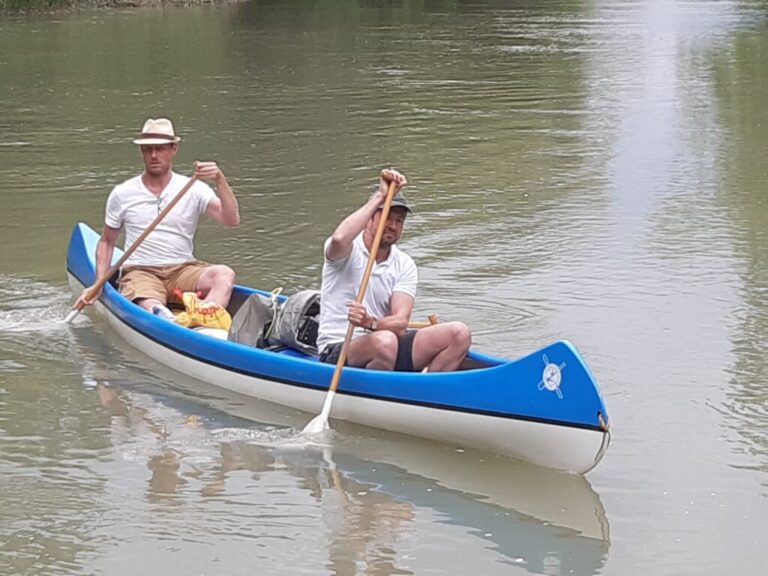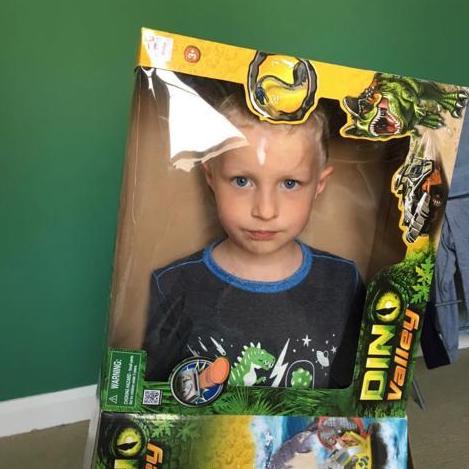Three countries in six days. It sounds good, when I say it like that.
Course, if you look at a map, you’ll see my recent canoeing trip—from Vienna in Austria, to Bratislava in Slovakia, and on to Halaszi in Hungary—covers less than 200km. But I’m going to talk it up, because there was something about it that’s pretty rare these days.
My itinerary wasn’t part of a drop-down menu on a website. There was no waiver, small print, or obligatory travel insurance. I made it myself, with an essential steer from a Hungarian named Zsolt Gardonyi. Zsolt runs his own adventure canoeing company. He has backed similar trips, but not this particular one.
“You’ll probably die,” Roman Rybiansky, a Slovakian work colleague, told me gloomily a few weeks before I set out. “There are strong currents in the Danube. And whirlpools. And the Raketa.” The Raketa is a Soviet era hydrofoil. Roman admitted he’s not much of a swimmer, but I couldn’t help feeling worried.
My companion on the trip, the theoretical physicist Thomas Fink, errs on the side of incaution. He laughs—or smiles at least—in the face of danger. On the other hand, when calculating risk, it’s probably worth listening to the Director of the London Institute for Mathematical Sciences.
This is the thing, though. For such a trip, you want to know something, but not everything. You don’t want too much kit.
Remember those choose-your-own-adventure books, which became a thing in the 1980s? After deciding to be a Dwarf or a Warrior, you’re on a quest to kill the Lizard King, say. The point is, the story doesn’t proceed in a linear fashion. You have to choose. “Do you drink the foaming potion (turn to page 43). Or do you fling it in the face of the barmaid (turn to page 150)?”
Our Danube trip is like that. We know something about what’s in store, but not too much. We have to keep making choices, which we know will affect our future.
On arriving in Vienna from the airport, for instance, we realise that we don’t have a grille for cooking. “We’re going to need some wire,” says Fink, who is insistent on lighting fires. I point out some roadworks on the roundabout in front of Vienna’s big ferris wheel, and Dr Fink sets to work, ripping away a few strands from the fence.
It is late afternoon when we reach the graffitied banks of the Donaukanal. Nearby, the IBM Building—formerly the Diana Baths, where Strauss’s Blue Danube was first performed—marks our point of entry. Our contact, David, is taken aback by our appearance, since, for reasons that will become clear, we are both wearing suits. While we change into shorts, we are leered at by a passing drunk on the towpath.
We climb into our sturdy canoe, stash our suits in waterproof barrels, and start paddling. The bemused figure of David grows smaller behind us. A light rain falls.
After an hour, we join the Danube proper and celebrate with a couple of beers. The rain stops and the sun breaks through under a blanket of cloud behind us. There is almost no traffic on the river. As long as we keep our wits about us, we’re unlikely to be hit by a passing Raketa. My fears were unfounded.
As dusk grows duskier, we moor up beside a nameless island in the stream. Fink soon has a fire going. Our pork steaks taste terrific, partly because we know they have been cooked on a grille improvised from municipal Viennese wire. Half-drunk, we lie down in sleeping bags and close our eyes.
In the small hours, I wake and check our canoe is where we left it. A sheet of mist lies over the river. A duck rises from the water with a clatter.
Day Two is sunny. The 10km/h current does much of the work. We pass Carnuntum, where Marcus Aurelius wrote the second volume of his Meditations. We pass Hainburg, whose walls were built with ransom money for Richard I. Then, up ahead, we spy ludicrously dramatic battlements on a pinnacle of rock. Castle Devin is a signpost welcoming us to Slovakia.
Now poplar seeds keep pace beside us, floating on the breeze like scraps of cotton wool. Woods and fields give way to cityscape. Suddenly we are in Bratislava.
Because of the force of the current, mooring presents a choose-your-own dilemma. “Do you moor early, then carry your kit further? Or do you try to moor in the best spot, and risk missing it and being carried away downstream?”
We aim for the optimal. The trick is to turn into the current and row hard against it, then inch diagonally backwards towards your post. To our satisfaction, we pull it off.
Four hours later, we have showered and changed into suits and ties, and are walking uphill towards the high white turrets of Bratislava Castle, which overlooks the city.
My old friend Philipp Andrássy-Földeáky, who lives in Bratislava, has timed a drinks party to coincide with our arrival. As it happens, the work event is promoting a type of experience that is the exact opposite of the kind I’m talking about.
The financial services company Philipp works with, Emineo Partners, is offering a dazzlingly exclusive Roman holiday for current and prospective clients—for anyone, in fact, who has the £2,000 required to sign up. Now it goes without saying that two grand is a lot of money. But as Philipp points out in his rousing speech, which he delivers in the Castle’s Orangerie, in return you get “the best of everything”.
When I glance through the brochure he hands me after his talk, I learn that “the best” includes: at the Palazzo Doria Pamphilj, admiring Velasquez’s portrait of Pope Innocent X, which may be the greatest portrait of anyone ever; from the flat of Alda Fendi, scion of the fashion brand, gazing at the spot where Julius Caesar was cremated; and exploring the Palazzo Ferrajoli, where the last King of Italy stayed before he left for exile.
The USP, though, of the Grandeur of Rome tour is that, at each house, you’ll be personally greeted and entertained by its owner—for instance, Prince Jonathan Doria Pamphilj, Alda Fendi herself, and the Marquis Guiseppe Ferrajoli. On top of this, you’ll be looked after by my mate Philipp, who, in addition to being probably the most charming man on the planet, knows as much as anyone about popes and palazzos.
This, then, provides a necessary counterbalance to my choose-your-own theme. There are times, clearly, when you need someone else to make the choices. That’s the case with Emineo’s tour, which no one could arrange for themselves. The same could be said for the delicious Mrva & Stanko Champagne I drink in the shadow of Bratislava Castle, with my wife Georgia, who has flown in for the party.
Sometimes, though, you want to choose your own adventure—and you can. That’s what Georgia and I do the following morning, through a Champagne hangover, stumbling upon the Museum of Arthur Fleischmann in the heart of Bratislava. This showcases the wonderful work of a man who pioneered sculpture in perspex.
On Day Four, Dr Fink and I bid farewell to Georgia and Philipp, and climb back into our canoe. Soon we swerve off the Danube into a pretty tributary called the Mosoni-Duna. This river is slower and narrower. Expressionist fingers of dead wood stick out over the water. “Good firewood,” Fink remarks for the umpteenth time. Twice, the sleek form of an otter swims past.
We tie up beside a copse of ash trees on the Hungarian border. Fink once again performs his fire-lighting magic. His technique now is to lay the points of three long thick branches together and light them at the intersect. Whenever the fire needs feeding, he simply inches one of these branches further into the fire.
During the night, I’m shaken awake by the theoretical physicist. There’s an animal in the woods that is making a disturbing amount of noise. I didn’t hear it because I went to sleep wearing heavy-duty ear-defenders. To me, it sounds like a stray dog. “That’s not a dog!” Fink insists, brandishing a stick from the fire, on guard against an attack.
I go back to sleep. He stays up half the night, protecting us against a mauling.
On Day Five, we row onward into Hungary. Despite paddling like crazy, we fail to make it to Halaszi on time. Zsolt picks us up a little short of our planned destination.
On our final morning, while Dr Fink labours over equations in a cafe, I explore the magnificence of Budapest and take time to ponder the lessons we have learned. It occurs to me that another virtue of the Choose-Your-Own Adventure is that it infinite potential for mythologising.
Admittedly, anyone who signs up for Emineo’s Grandeur of Rome tour will hobnob, after a fashion, with kings, popes and emperors. Yet our Danube adventure had its castles and its monsters, too. It had its magical gifts. Georgia, for her part, contributed an excellent impersonation of a princess.
In the end, then, do you drink the foaming potion? Or do you fling it in the face of the barmaid? The answer is, it doesn’t matter. What matters is that you make your own choice.
For details about Emineo’s tour, email [email protected]. To learn more about trips offered by Zsolt Gardonyi, go to evezzvelem.hu.

